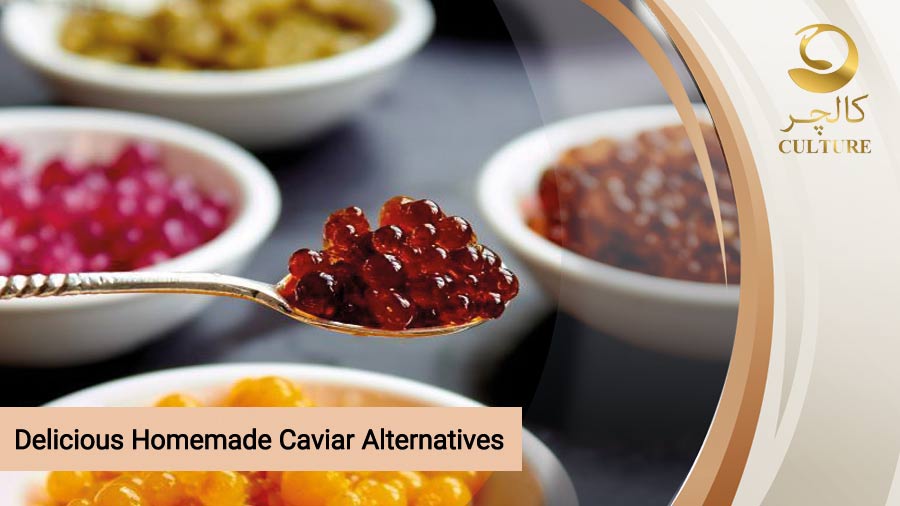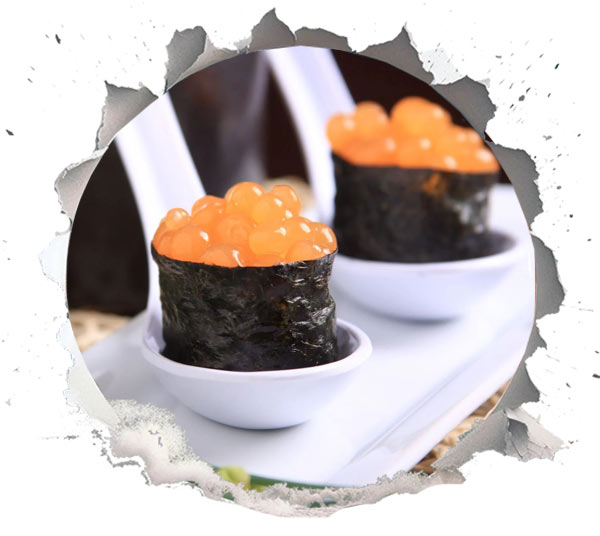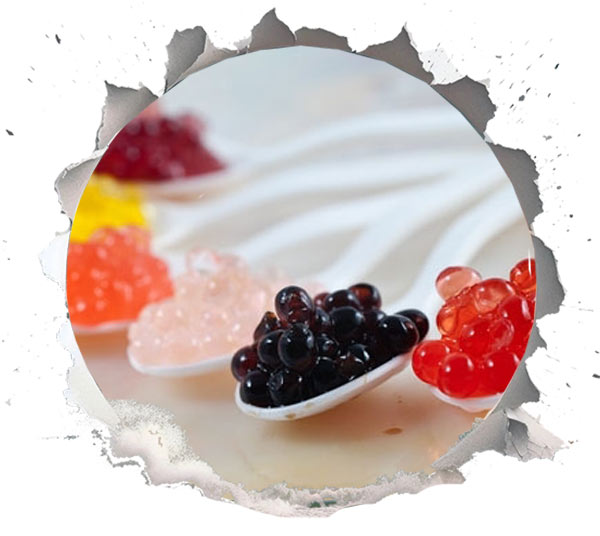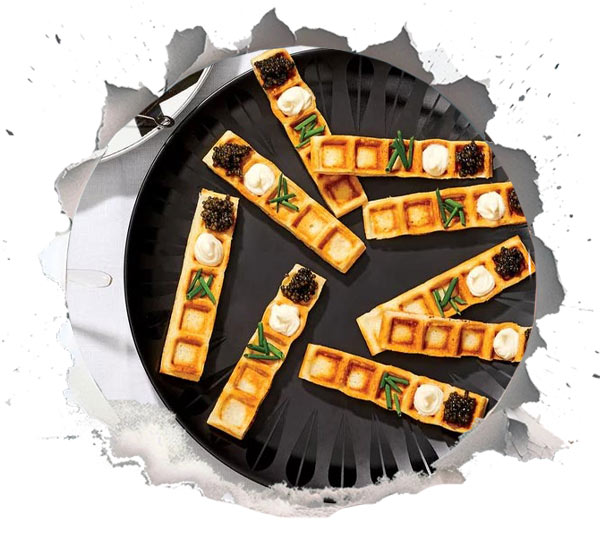Delicious Homemade Caviar Alternatives: A Comprehensive Guide

Caviar, often regarded as a luxurious delicacy, has been a staple in gourmet cuisine for centuries. However, its high price and the environmental concerns surrounding overfishing have led many to seek alternatives. This article explores a variety of delicious homemade caviar alternatives, their health benefits, and how to create them at home, providing a satisfying experience without the hefty cost.
Understanding Caviar
Before delving into alternatives, it’s important to understand what caviar is. Traditionally, caviar refers to the salted roe (fish eggs) from the sturgeon. The most sought-after varieties include Beluga, Osetra, and Sevruga, each boasting distinct flavours and textures that contribute to their esteemed status. However, high demand has resulted in significant environmental issues, prompting a search for sustainable substitutes.
The Environmental Impact of Caviar Production
According to the World Wildlife Fund (WWF), sturgeon populations have drastically declined due to overfishing and habitat loss, with some species now critically endangered. The global caviar market is valued at approximately £300 million, with a significant portion sourced from wild sturgeon. This alarming trend has led consumers to consider more sustainable options.
Why Choose Homemade Caviar Alternatives?
Homemade caviar alternatives not only offer a cost-effective solution but also allow for creativity in the kitchen. They can be crafted from various ingredients, catering to different dietary preferences, including vegan and vegetarian options. Additionally, making these alternatives at home ensures freshness and control over the ingredients used.
Popular Homemade Caviar Alternatives

1. Seaweed Caviar: a Great Alternative
Ingredients:
- 1 cup of seaweed (such as nori or dulse)
- 1 tablespoon of soy sauce
- 1 teaspoon of liquid smoke (optional)
- 1 teaspoon of agar-agar powder
- 1 cup of water
Method:
- Soak the seaweed in water for about 15 minutes until it softens.
- In a saucepan, combine the soaked seaweed, soy sauce, liquid smoke, and water. Bring to a simmer.
- Dissolve the agar-agar in a small amount of hot water and add it to the mixture. Stir well.
- Allow the mixture to cool slightly, then drop spoonfuls into a bowl of ice-cold water to form pearls.
- Let them set for about 30 minutes before serving.
Nutritional Benefits: Seaweed is rich in vitamins and minerals, particularly iodine, which supports thyroid function. It also contains antioxidants and omega-3 fatty acids, making it a heart-healthy choice.
2. Vegan Caviar from Tapioca Pearls

Ingredients:
- 1 cup of tapioca pearls
- 4 cups of water
- 2 tablespoons of soy sauce
- 1 tablespoon of lemon juice
- Black food colouring (optional)
Method:
- Boil the water in a pot and add the tapioca pearls. Cook according to package instructions until transparent.
- Drain and rinse the pearls under cold water.
- In a bowl, mix the soy sauce, lemon juice, and food colouring.
- Add the tapioca pearls to the mixture and let them marinate for at least 30 minutes.
Nutritional Benefits: Tapioca is gluten-free and provides a source of carbohydrates, making it an excellent option for energy. It’s also low in calories, allowing for guilt-free enjoyment.
3. Avocado Caviar: a New Alternative
Ingredients:
- 2 ripe avocados
- 1 tablespoon of lime juice
- Salt and pepper to taste
- 1 tablespoon of sesame seeds (optional)
Method:
- Mash the avocados in a bowl until chunky.
- Stir in lime juice, salt, and pepper.
- For a unique twist, sprinkle sesame seeds on top before serving.
Nutritional Benefits: Avocados are packed with healthy fats, particularly monounsaturated fat, which is beneficial for heart health. They also provide a range of vitamins, including E, K, and several B vitamins.
4. Beetroot Caviar
Ingredients:
- 1 large beetroot, roasted and chopped
- 2 tablespoons of balsamic vinegar
- 1 tablespoon of olive oil
- Salt to taste
Method:
- In a blender, combine the roasted beetroot, balsamic vinegar, olive oil, and salt. Blend until smooth.
- For a more textured caviar, pulse the mixture until you reach the desired consistency.
Nutritional Benefits: Beetroot is rich in essential nutrients such as folate, manganese, and potassium. It’s known for its potential to improve blood flow and lower blood pressure.
5. Carrot Caviar
Ingredients:
- 2 large carrots, grated
- 1 tablespoon of olive oil
- 1 tablespoon of apple cider vinegar
- Salt and pepper to taste
Method:
- Sauté the grated carrots in olive oil until soft.
- Stir in apple cider vinegar, salt, and pepper. Cook for another 5 minutes.
- Allow to cool before serving.
Nutritional Benefits: Carrots are rich in beta-carotene, which the body converts into vitamin A, essential for vision and immune function.
How to Serve Homemade Caviar Alternatives

Homemade caviar alternatives can be presented in various ways, making them versatile for any occasion. Here are some serving suggestions:
- On Toast: Spread on crusty bread or crackers for an elegant starter.
- In Salads: Use as a topping to add colour and texture to salads.
- With Pasta: Toss with pasta for a unique twist on traditional dishes.
- As a Garnish: Use as a garnish for soups or seafood dishes to enhance presentation.
The Health Benefits of Choosing Caviar Alternatives
Opting for homemade caviar alternatives not only supports a sustainable approach to eating but also offers numerous health benefits. Many of these substitutes are lower in sodium compared to traditional caviar, making them heart-healthy options. Additionally, they often contain beneficial nutrients that can enhance overall well-being. For those interested in preparing dishes with caviar, exploring various caviar recipes can inspire and elevate your culinary creations.
Nutritional Comparison
| Avocado Caviar (1 oz) | Vegan Tapioca Caviar (1 oz) | Seaweed Caviar (1 oz) | Traditional Caviar (1 oz) | Component |
| 30 | 15 | 10 | 40 | Calories |
| 1 | 0.5 | 1 | 5 | Protein (g) |
| 3 | 0 | 0 | 2.5 | Fat (g) |
| 0 | 120 | 150 | 300 | Sodium (mg) |
| 250 | 0 | 100 | 500 | Omega-3 (mg) |
Conclusion
Creating homemade caviar alternatives is not only an enjoyable culinary adventure but also a sustainable choice. With various options like seaweed, tapioca, avocado, beetroot, and carrot, there’s something to satisfy every palate. These alternatives not only mimic the unique texture and presentation of traditional caviar but also offer a wealth of nutritional benefits.
As consumers become increasingly aware of the environmental impact of their food choices, homemade alternatives provide a delicious way to indulge without guilt. Whether you’re hosting a dinner party or simply looking to elevate your everyday meals, these homemade caviar alternatives are sure to impress.
Final Thoughts
Embrace the art of culinary exploration by trying out these homemade caviar alternatives. For those who believe they need to use traditional caviar, you might consider buying caviar, but remember that these alternatives offer equally delightful flavours and textures. Share your creations with friends and family, and enjoy the sustainable options that bring something special to your table. Not only will you be savouring delicious food, but you’ll also be contributing positively to the environment, making each bite not just tasty but meaningful.

